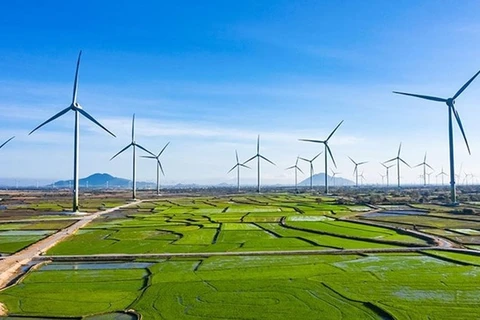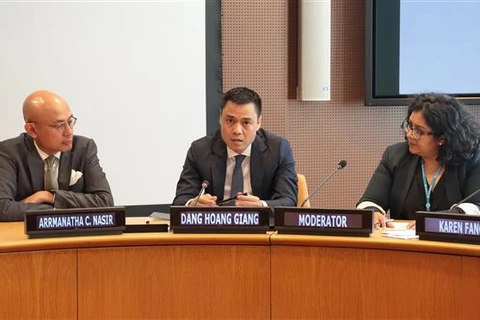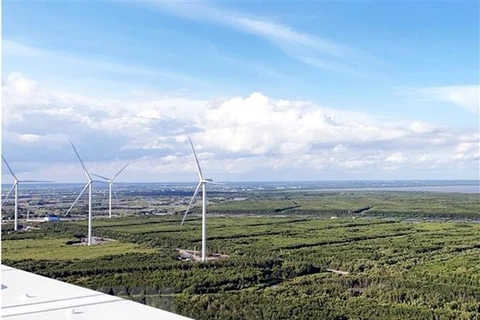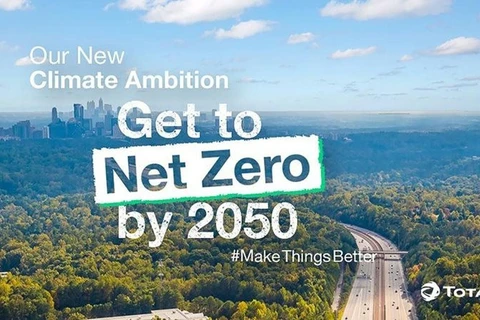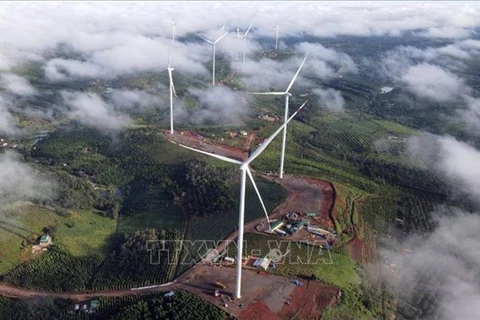 Deputy PM Tran Hong Ha addresses the meeting on the draft Power Development Plan VIII on May 4. (Photo: VNA)
Deputy PM Tran Hong Ha addresses the meeting on the draft Power Development Plan VIII on May 4. (Photo: VNA) The plan should be added with new points in terms of mindset and scientific - technological advances to deal with challenges related to climate change response, greenhouse gas (GHG) emission reduction, energy transition, green transition, and circular economy development.
This is an inevitable trend and also a chance for Vietnam to transform its economy and create an advantage for the country in free trade, Ha told a meeting held in Hanoi on May 4 to review the draft national power development plan for 2021 - 2030, with a vision to 2050 (Power Development Plan VIII).
He analysed the targets, measures, and conditions for Vietnam to implement the JETP with the G7 countries and international partners, asking for the new power development plan to be supplemented with the JETP’s content in a spirit that Vietnam will shift from fossil fuel to renewable energy when suitable technology, governance measures, and prices are in place.
Ha also asked the Ministry of Industry and Trade (MoIT) and the electricity sector to thoroughly consider issues related to just energy transition, the reduction of net GHG emissions to zero, and new-generation nuclear power technology.
They were also requested to devise policies supporting major energy businesses of Vietnam to pilot cooperation with foreign firms so as to master technology, produce transmission equipment, and form a complete renewable energy “ecosystem” in industrial parks, thereby developing the country into a renewable energy hub in the Asia-Pacific.
Deputy PM Ha also asked the MoIT, which is the consulting unit for the plan, to take in opinions and perfect the plan, which also needs to pay due attention to the treatment of waste from renewable energy projects.
Power Development Plan VIII is aimed at ensuring sufficient electricity supply for domestic demand, building a smart and efficient grid system connected with regional countries, cutting GHG emissions from power generation to 204 - 205 million tonnes by 2030 and about 27 - 31 million tonnes by 2050, and ensuring all households gain access to electricity by 2030.
It targets that by 2030, the total capacity of power plants will reach 158,244 MW, excluding exports. About 18.5% of the capacity will come from hydropower, 19% from coal-fired power, 9.4% from gas-fired power, 14.2% from thermal power, 13.8% from onshore wind-powered thermal power, and 13% from solar power.
By 2050, power plants are expected to have a total capacity of 490,500 - 573,100 MW, including 6.3 - 7.3% from hydropower, 4.5 - 6.6% from biomass thermal power, and 14.3 - 16% from offshore wind power. Meanwhile, coal will no longer be used for power generation./.
VNA

